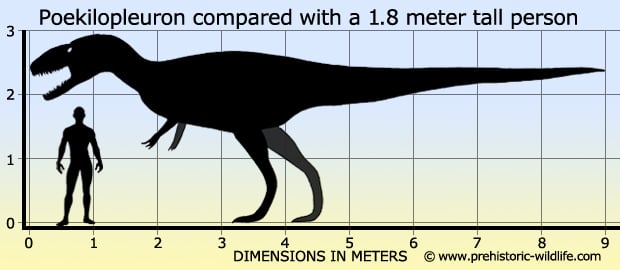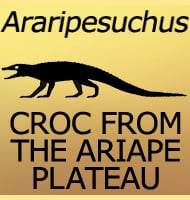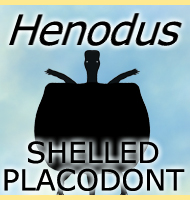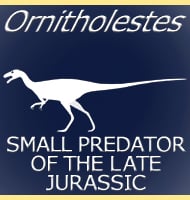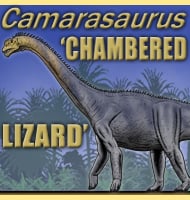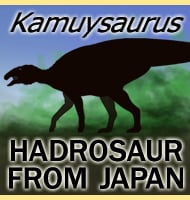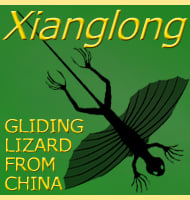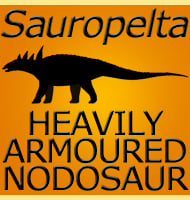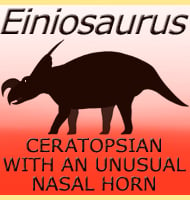In Depth
Discovered back in the early days of scientific palaeontology, Eudes-Deslongchamp named the species Poekilopleuron bucklandii in honour of William Buckland, the man who named the first ever known dinosaur Megalosaurus. Additionally Eudes-Deslongchamp thought that Poekilopleuron may actually be the same species of dinosaur as Megalosaurus, an idea shared by the palaeontologists Fredriech von Huene in the twentieth century. Despite this however, most other palaeontologists continue to treat Poekilopleuron as a distinct genus. The genus name is derived from three distinct groups of ribs in the holotype.
A second species of Poekilopleuron (as Poicilopleuron valens) was created in 1870 by Joseph Leidy based upon the description of a single partial tail vertebrae from the Morrison Formation of Colorado, USA. In 1873 Leidy renamed this species as a distinct genus, Antrodemus, however in 1920 Charles W. Gilmore identified it as a vertebra of an Allosaurus, an identification that has been accepted and followed by many other palaeontologists.
Another species Poikilopleuron pusillus (named by Richard Owen in 1876) was renamed Poekilopleuron minor by Edward Drinker Cope in 1879 only to be renamed as a new genus Aristosuchus by Harry Govier Seeley in 1887. Poekilopleuron schmidti, created in 1883 by W.A. Kiprijanow has since been found to be based upon sauropod foot bones and unidentifiable ribs, which is why this species is no longer considered valid. The most recently named species of Poekilopleuron valesdunensis (Ronan Allain, 2002) was renamed as the genus Dubreuillosaurus in 2005. To date only the type species, P. bucklandii, remains. Additionally the original remains were destroyed in World War Two during the battle for Caen, which means that today we only have drawings and casts of the originals to go on.
Poekilopleuron was towards the larger end of the scale for Jurassic era theropods from Europe. One interesting thing are the long fore arms of Poekilopleuron, which in general terms concerning theropods fits in with the pattern of theropod forearms getting progressively smaller during the Mesozoic.
Further Reading
– M�moire sur le Poekilopleuron bucklandii, grand saurien fossile, interm�diaire entre les crocodiles et les l�zards. A. Hardel, Caen, 114 p., 8 pl. – J. -A. Eudes-Deslongchamps – 1837. – M�moire sur le Poekilopleuron bucklandii, grande saurien fossile, interm�diaire entre les crocodiles et les l�zards, d�couvert dans les carri�res de la Maladrerie, pr�s Caen, au mois de juillet 1835. – M�moires de la Soci�t� Linn�enne Normandie. 6: 37–146, 8 pl. – J. -A. Eudes-Deslongchamps – 1838. – Note on Poekilopleuron bucklandi of Eudes Deslongchamps (p�re), identifying it with Megalosaurus bucklandi. – Quarterly Journal of the Geological Society. 35 (1–4): 233–238. – J. W. Hulke – 1879. – On Aristosuchus pusillus Owen, being further notes on the fossils described by Sir R. Owen as Poikilopleuron pusillus Owen. – Quarterly Journal of the Geological Society of London. 43 (1–4): 221–228. – H. G. Seeley – 1887. – Poekilopleuron bucklandii, the theropod dinosaur from the Middle Jurassic (Bathonian) of Normandy. – Palaeontology. 45 (6): 1107–1121. – R. Allain & D. J. Chure – 2002.
